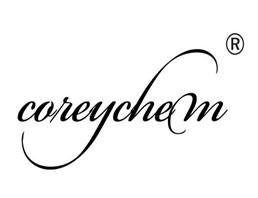| Bactericidal and Disinfection effect |
Trichloroisocyanuric acid (TCCA) is a strong oxidant and chlorinating agent which has efficient, broad-spectrum, and safe disinfection effects. It has the strongest bactericidal activity among chlorinated isocyanuric acid products against bacteria, viruses, fungi, mold, Vibrio cholerae, Bacillus. It also has certain inhibitory effect on coccidia oocysts and thus can used in the disinfection in the environment, drinking water, fruits and vegetables, livestock feeders, fish ponds and silkworm rooms. The application method is using powder for the preparation of 4-6 mg/kg concentrations for the disinfection of drinking water and using a solution of concentration of 200-400 mg/kg for environmental disinfection and utensils disinfection.
TCCA has various effects including killing algae, deodorant, and water purification as well as bleaching. It has a stronger and better bactericidal and bleaching effect than sodium dichloroisocyanurate and thus being widely used in the sterilization treatment of washing bleacher of cotton and hemp fiber fabric, wool shrink proofing agents, rubber chlorination, and oil drilling mud and sewage, disinfection of battery materials, disinfection of swimming pool, disinfection of drinking water, treatment of industrial wastewater and sewage, food processing industry, food hygiene industry, aquaculture, daily chemical industry, hospitals, nurseries, epidemic prevention, waste disposal, hotels, restaurants and natural disasters, large-scale disinfection and sterilization after man-made disaster.
Instructions:
1. swimming pool disinfection: calculate the usage according to 2-3g/m3; take effect for 30-60 minutes.
2. Public places and ground disinfection: use 1500-3000-fold diluted water solution for spraying and wiping for 30 minutes. Infectious disease epidemic area, use 150-200-fold aqueous diluted water solution for spray disinfection.
3. disinfection of white clothing and blankets: apply 2000-3000 fold diluted solution for clean items; soak for 10 minutes; for seriously polluted items, diluted 500 times, soak for 20 minutes.
4. disinfection of bathroom and toilet scrub; use 300-fold diluted solution for reaction of 30 minutes.
5. sterilization of non-metallic medical equipment: use 500-1000 times diluted solution for soak of 30 minutes; disinfection of apparatus with pus and blood; apply 100-fold diluted water solution for reaction of 30 minutes.
6. disinfection of non-metallic tableware: use 500-1000 times diluted water solution for reaction of 30 minutes. |
| Chemical Properties |
TCCA has an excellent bactericidal property and is a new generation of broad-spectrum, high efficiency, low-toxicity fungicides, bleacher and anti-shrinking agent. It is mainly used in the disinfection and sterilization of drinking water, industrial water recycling, swimming pool, restaurants, hotels, public places, homes, hospitals, eggs and prevention of fish diseases. It has a killing effect on almost all fungi, bacteria, viruses, and spores. It is safe and convenient to use. This product can also be widely used in food, dairy, rice seed processing, fruit preservation, fiber bleaching, wool shrink, daily chemical decolorization, wood mold paper making, rubber oxidation and battery materials.
The above information is edited by the chemicalbook of Dai Xiongfeng. |
| Uses |
The product has a strong sterilization, bleaching effect. It is widely used as the high-efficiency disinfectant in civilian health, livestock breeding and plant protection. It can also be used as the washing bleacher of cotton and hemp fiber fabric, wool shrink proofing agents; it can also be used for rubber chlorination, battery materials, organic synthesis industry and the bleach of dry laundry.
It is used for the sterilization and disinfection of various kinds of water such as drinking water, swimming pool water, industrial circulating water, and sewage.
It is an anti-clotting drug. |
| Category |
oxidant |
| Toxicity grading |
poisoning |
| Acute toxicity |
oral: rat LD50: 406 mg/kg |
| Irritation data |
skin: rabbit 500 mg/24 hours: moderate; Eyes-rabbit 50 micrograms/24 hours and severe. |
| Explosiveness and Hazardous characteristics |
being mixed with ammonium salt, ammonia, urea can generate explosive nitrogen trichloride. |
| Flammability and hazard characteristics |
it is flammable in case of organic substance; it can generate toxic nitrogen trichloride upon wet and heating. |
| Storage characteristics |
Treasury: ventilation, low-temperature and dry; it should be stored separately from fuel, organic matter, and oxides. |
| Fire extinguishing agent |
Plenty of water |
| Chemical Properties |
white to light yellow crystal powde |
| Uses |
antiarrhythmic |
| Uses |
Trichloroisocyanuric Acid is a disinfectant and anti-bacterial. It can also be used in the synthesis of napthols. |
| Uses |
Chlorinating agent, disinfectant, industrial deodorant. In household cleansers. In removing oil and protein in stainless steel. In nonshrink treatment for wool. Oxidant and chlorinating reagent in organic synthesis. |
| General Description |
A white slightly hygroscopic crystalline powder or lump solid with a mild chlorine-like odor. Said to have 85 percent available chlorine. Decomposes at 225°C. Moderately toxic by ingestion. May irritate skin and eyes. Active ingredient in household dry bleaches. Used in swimming pools as a disinfectant . |
| Air & Water Reactions |
Slightly hygroscopic [Hawley]. Slightly soluble in water. May react with water releasing gaseous chlorine. If mixed with a small amount of water, the concentrated solution (with pH at about 2.0) may explode due to the evolution of unstable nitrogen trichloride. (explanation in Bretherick 5th ed.) |
| Reactivity Profile |
TRICHLORO-S-TRIAZINETRIONE, [DRY, CONTAINING > 39% AVAILABLE CHLORINE] may react vigorously with ammonium compounds or hydrated salts. Prolonged exposure to heat may result in the vigorous decomposition with the rupture of containers. Accelerates the burning of combustible materials [AAR 1991]. May reactwith alcohols to yield alkyl hypochlorites that decompose in the cold and explode on exposure to sunlight or heat. Hypochlorites of tertiary alcohols are less unstable than those of secondary or primary alcohols [NFPA 491 M. 1991]. |
| Health Hazard |
Inhalation causes sneezing and coughing. Contact with dust causes moderate irritation of eyes and itching and redness of skin. Ingestion causes burns of mouth and stomach. |

 China
China







